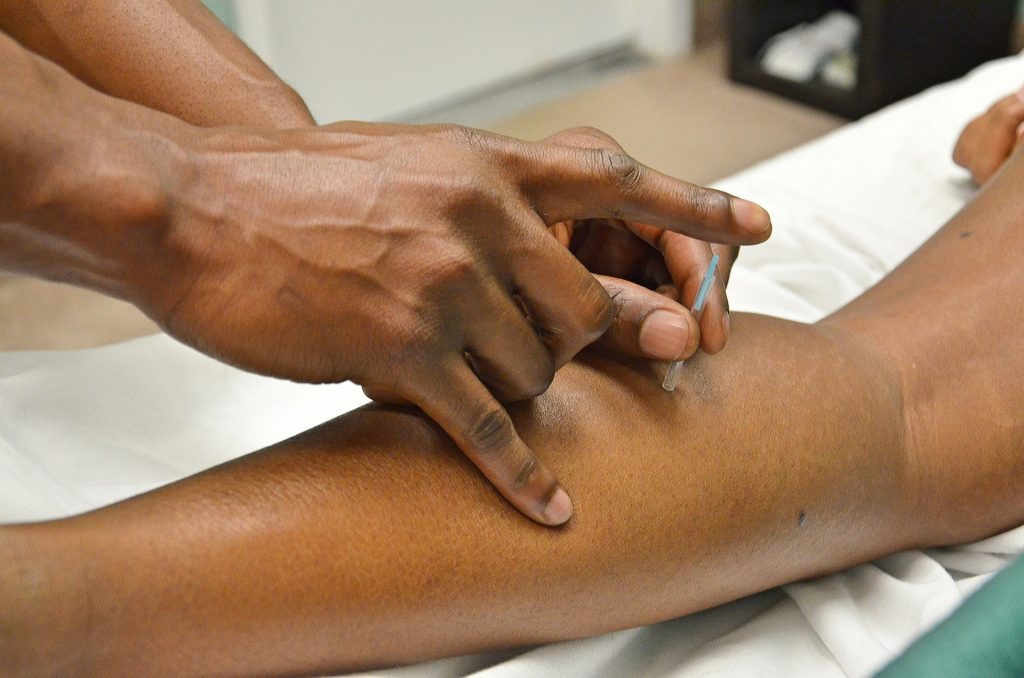How does acupuncture work?
Acupuncture is form of complementary medicine first practiced in ancient China almost 3000 years ago. It works by using slim, sterile needles to stimulate pressure points, known as acupoints, on the body. The primary intention is to unblock the body’s energetic life force, or qi, to restore balance. Physically, inserting or applying pressure also draws blood to the area, delivering vital oxygen and nutrients.
Although acupuncture is considered to be an alternative to Western medicine, many studies have demonstrated a positive impact on the nervous, endocrine, cardiovascular, digestive and immune systems. However, you should always consult your GP before beginning any course of treatment.
The benefits of acupuncture
Acupuncture is primarily used for pain management, but may be effective in the treatment of a wide variety of conditions, including:
- Headaches and migraines
- Neck and back pain
- Muscle spasms
- Osteoarthritis
- Joint pain
- Dental pain
- Anxiety
- Allergies
- Digestive problems
- Insomnia
What happens during an acupuncture appointment?
A session will typically begin by discussing your history and lifestyle, even if this doesn’t seem to relate that closely to your specific complaint. Traditional chinese medicine takes a holistic view of the body, meaning that one symptom cannot be treated without uncovering the root cause of the imbalance.
You will then be invited to sit or lie down on a table, and needles will be inserted into specific points on your body. You might feel a momentary pinch as they’re inserted, followed by a deep ache in the area, but you should always communicate any excess pain. Some practitioners will gently manipulate the needles, or even use heat or electricity.
The needles will be left in place for between 5 and 60 minutes, before being removed. You may be recommended some supplements or herbs to take once you get home. Expect to need anywhere from 2 to 12 treatments before you start feeling the benefits.
Acupuncture vs acupressure
Acupuncture and acupressure make use of the same acupoints and meridians, but acupressure is non-invasive. You’ll find that acupressure techniques are used during many types of massage to relieve muscular knots and promote a sense of deep relaxation.
Pressure points in the body
There are around 2000 acupoints on the body, positioned over 20 meridians (12 major and 8 minor). Many of these are located on the hands and feet, and are also used in Reflexology. In some cases, you may be able to benefit from applying a gentle rubbing pressure to these points on your own.
The most well known include:
- Between the thumb and forefinger: pinching down on this fleshy area may relieve tension headaches.
- Third eye: on the front of the forehead, right above the bridge of the noise, is a point that might reduce eye strain.
- Earlobe: Massage the highest point of the earlobe can reduce gas and bloating.
- Sole of the foot: Curl your toes until you see an indentation on the ball of your foot. Place thumb on this point and grasp your foot with your hand, applying pressure. This may calm anxiety.
–
Who are we? We’re Urban Massage – on a mission to make wellness rituals convenient and accessible without compromising on quality. So from just £49 an hour, you can enjoy a range of massages from an expert therapist at a time to suit you. Download the app or go to urbanmassage.com to book 60 minutes of restorative me time.
